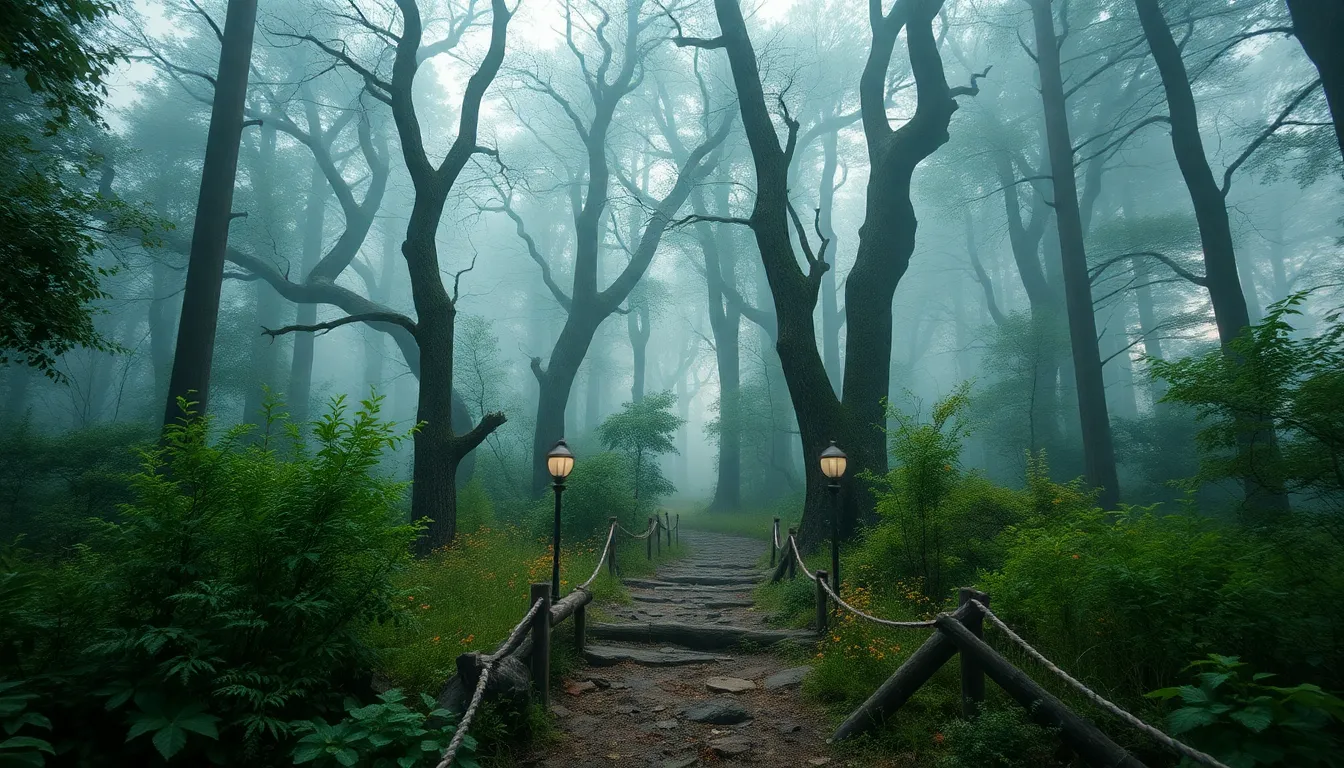The Enchanted Forest: A Journey into the Heart of Myth
I. Introduction
Enchanted forests have long captivated the human imagination, serving as mystical realms where reality and magic intertwine. In mythology, these forests symbolize the unknown, often acting as backdrops for tales of adventure, transformation, and discovery. Across cultures, forests hold a significant place in traditions and beliefs, embodying both sanctuary and peril.
This article aims to explore the multifaceted symbolism of enchanted forests in mythology, delve into their representation in literature and art, examine their psychological and environmental significance, and offer insights into personal experiences and how to create your own enchanted forest experience.
II. The Symbolism of Forests in Mythology
Forests have been portrayed as both mystical and foreboding places throughout mythology. They symbolize:
- Mystery and the Unknown: Enchanted forests evoke a sense of wonder and fear, signifying the transition from the familiar to the unfamiliar.
- Sanctuary vs. Danger: These woods can be a refuge for lost souls or a treacherous maze filled with lurking dangers.
- Themes of Transformation and Rebirth: Characters often undergo significant changes within forest settings, emerging wiser or changed after their journeys.
- Adventure: Many heroes embark on quests that lead them into enchanted forests, where they face trials that test their courage and resolve.
III. Enchanted Forests in Global Mythologies
Enchanted forests manifest in various forms across global mythologies:
- European Folklore: The Brothers Grimm often featured enchanted woods, such as in “Hansel and Gretel,” where the forest is both a place of enchantment and danger.
- Asian Mythologies: In China, mystical bamboo groves are often depicted as serene and magical, where spirits dwell and enlightenment awaits.
- Indigenous Tales: Native American cultures hold sacred forests as places of spiritual significance, where nature and the divine coexist.
IV. Iconic Enchanted Forests in Literature
Literature has brought enchanted forests to life through vivid storytelling and imaginative landscapes:
- Classic Fairy Tales: Many fairy tales, such as “Little Red Riding Hood,” use enchanted forests to set the stage for moral lessons and adventures.
- Modern Interpretations: J.K. Rowling’s Forbidden Forest in the “Harry Potter” series introduces readers to a world filled with magical creatures and hidden dangers.
- Influence on Fantasy Literature: Enchanted forests have inspired countless fantasy authors, creating a rich tapestry of worlds where magic thrives.
V. The Enchanted Forest in Art and Pop Culture
The allure of enchanted forests extends to various forms of art and pop culture:
- Visual Arts: Artists have long depicted enchanted forests, capturing their beauty and mystery through paintings, illustrations, and sculptures.
- Films and Animations: Movies like “Princess Mononoke” and Disney’s “Into the Woods” explore themes of enchantment and nature’s power.
- Video Games: Many games, such as “The Legend of Zelda,” feature enchanted forests as key elements of their gameplay and narrative.
VI. The Psychological and Emotional Aspects of Enchanted Forests
Engaging with enchanted forests offers profound psychological and emotional benefits:
- Allure of Nature: Nature has a calming effect, reducing stress and anxiety, and enchanted forests enhance this experience.
- Metaphors for the Subconscious: Forests often represent the depths of the subconscious, where individuals confront their fears and desires.
- Therapeutic Effects: Spending time in wooded areas can promote mental health and emotional well-being, encouraging reflection and growth.
VII. The Environmental Significance of Real Enchanted Forests
Real enchanted forests play a crucial role in environmental sustainability:
- Biodiversity: Enchanted forests are often rich ecosystems, home to diverse flora and fauna that contribute to ecological balance.
- Conservation Efforts: Protecting these mystical landscapes is vital for preserving biodiversity and combating climate change.
- Intersection of Mythology and Environmentalism: Recognizing the cultural significance of forests can foster greater environmental stewardship.
VIII. Personal Narratives: Exploring Enchanted Forests
Many individuals have shared transformative experiences in enchanted forests:
- First-hand Accounts: Visitors often describe feelings of wonder and peace when exploring these magical spaces.
- Transformative Experiences: Encounters with nature can lead to profound personal insights and a deeper connection to the world.
- Cultural Rituals: Many cultures engage in rituals within forest settings, celebrating the connection between humanity and nature.
IX. Creating Your Own Enchanted Forest Experience
Whether visiting a real enchanted forest or creating your own space, consider the following:
- Tips for Visiting: Seek out local forests or parks known for their beauty and tranquility.
- Activities and Rituals: Bring a journal, meditate, or have a picnic to deepen your experience.
- Encouraging Respect: Always practice Leave No Trace principles to preserve the natural beauty of these environments.
X. Conclusion
Enchanted forests hold a profound significance in mythology and culture, symbolizing mystery, transformation, and adventure. Their enduring appeal lies in their ability to connect us with nature and our inner selves. As we explore these magical realms, whether in literature, art, or our own experiences, we are reminded of the importance of preserving these mystical landscapes for future generations.



